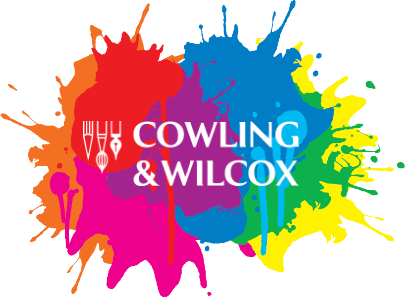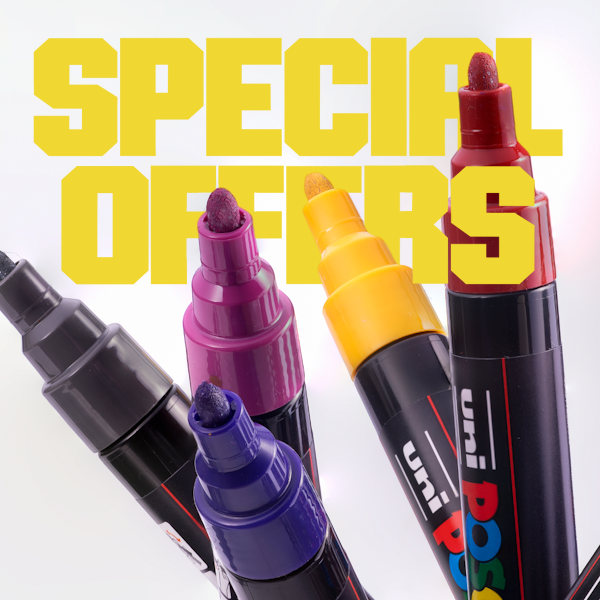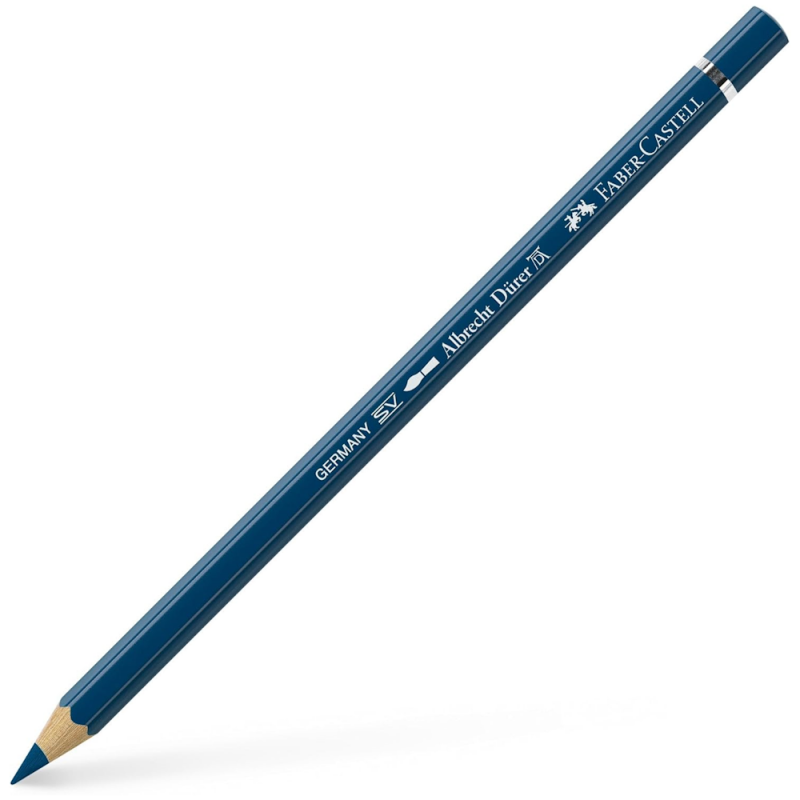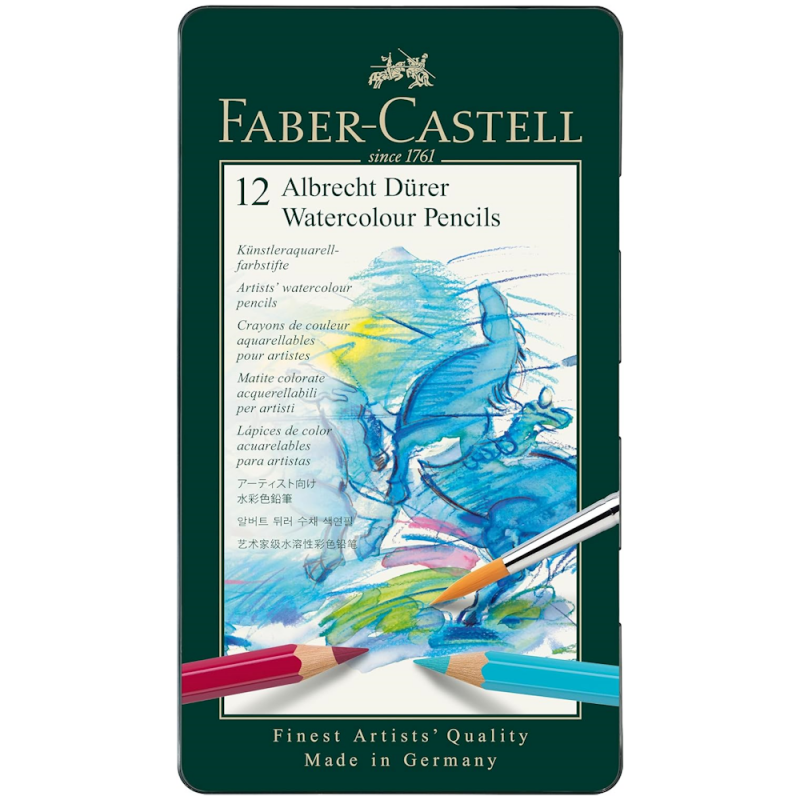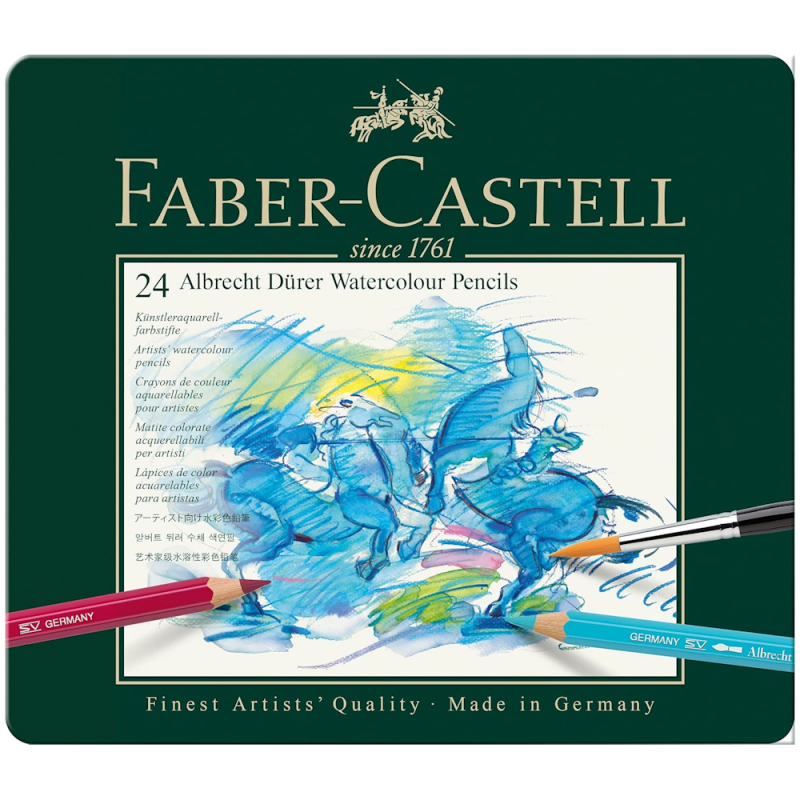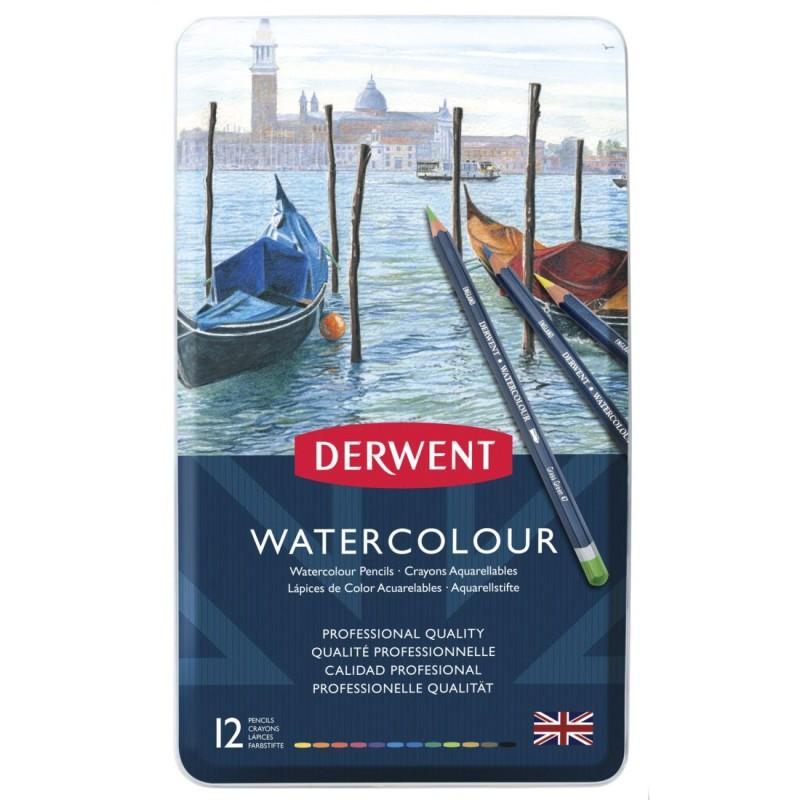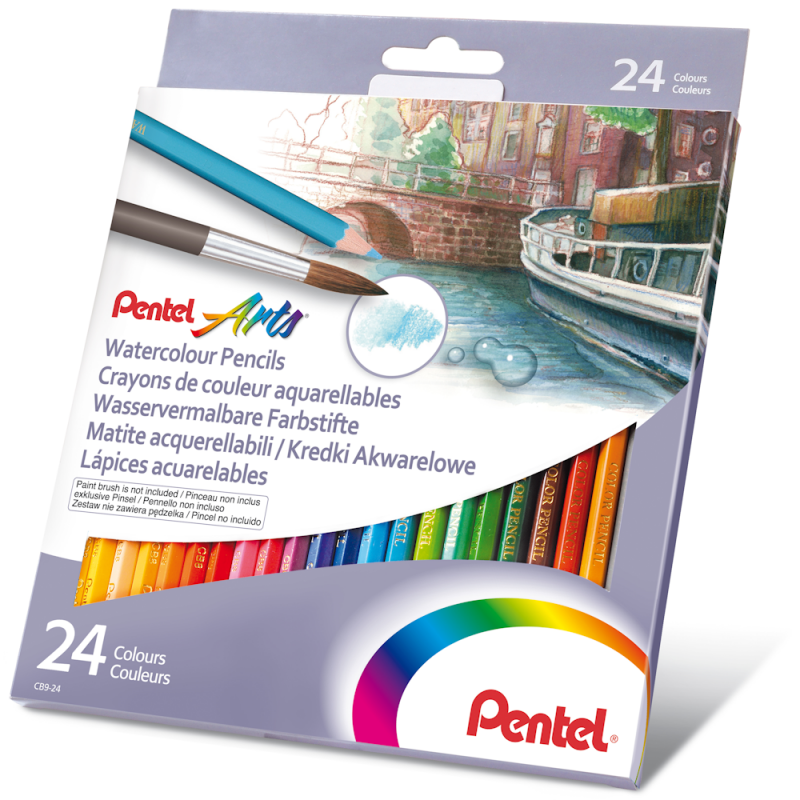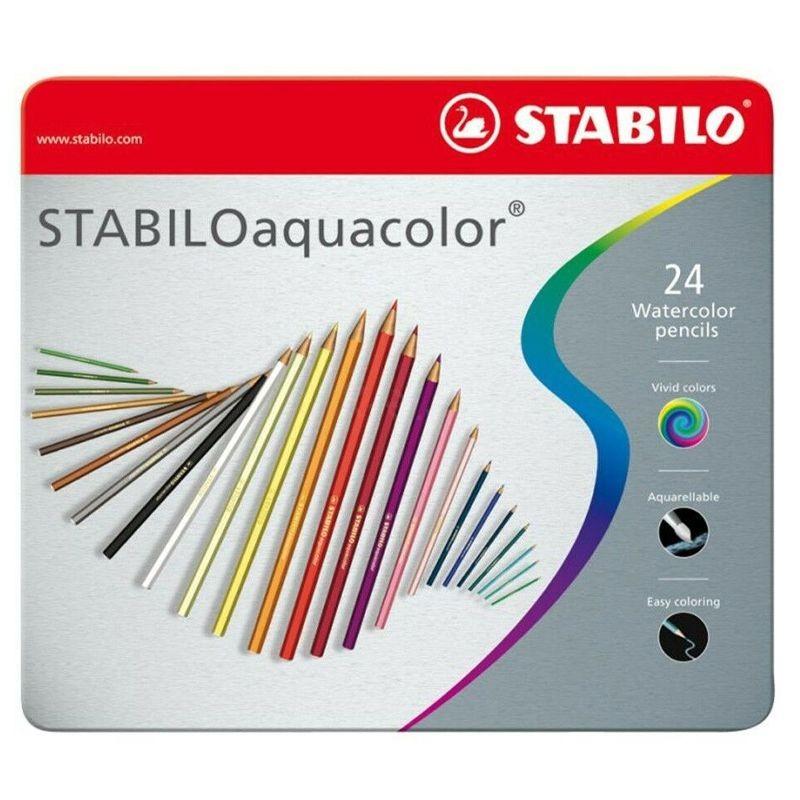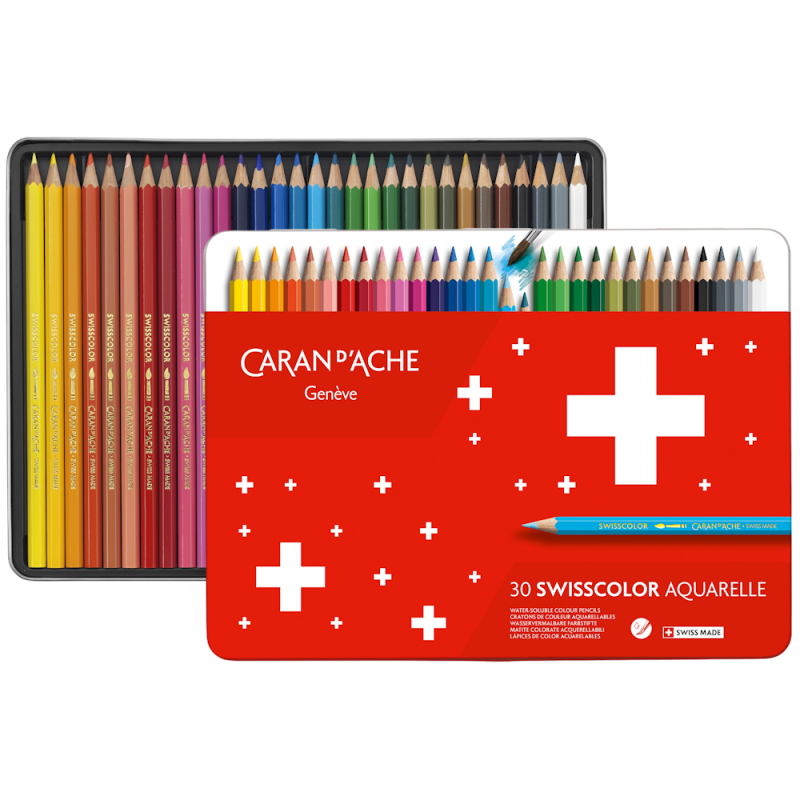Watercolour pencils combine the precision of a coloured pencil with the liquid beauty of watercolour paints for an almost magical hybrid tool ideal for both complete newcomers & seasoned artists looking for something new and exciting.
Understanding how best to use a watercolour pencil is essential for unlocking their true creative potential. In this post, we’ll be looking at watercolour pencils in general, before focusing on some of the most prominent examples from Faber-Castell, Derwent and Pentel.
What Are Watercolour Pencils?
Similar to a standard coloured pencil, watercolour pencils feature a core made using high-quality powdered pigments, which is then encased in wood.
However, their unique binder dissolves when wet, allowing the pigment to flow like watercolour. This makes them ideal for both wet and dry techniques including blending or washes.
.
Watercolour pencils are incredibly versatile, ideal for creating both expressive, abstract pieces or fine, detailed works dependent on your needs. Lets take a brief look at some of the more popular techniques, how they work & what they're great for!
Wet-on-Dry
A foundational watercolour pencil technique, wet-on-dry involves applying the pigment down on dry paper first, before activating with a wet brush and transforming the pencil marks into vibrant watercolour washes and strokes.
Ideal for precision and layering, this reliable technique offers more control in your work, allowing you to gradually build up & seamlessly blend colours for details, shading & gradients.
Dry-on-Wet
The opposite of the above, dry-on-wet is achieved by applying a dry watercolour pencil to damp or wet paper. As the pencil meets the water, it will release a much more intense burst of colour for bold, fluid strokes that lightly bleed and soften at the edges.
This method produces expressive, painterly strokes by allowing the colour to move more freely across the surface for unexpected gradients, soft transitions, spontaneous bleeds & blooming textures great for atmospheric effects like rain, sunsets or abstract pieces.
Dry-on-Dry
Offering a high degree of control in your work, the dry-on-dry technique involves applying a dry watercolour pencil to a dry sheet of paper (much like a standard coloured pencil). The lack of water ensures the marks remain sharp, crisp and textured for rendering precise features such as fur, feathers or architectural details.
Often used to create an underdrawing or block in areas of colour for later activation with water, the dry-on-dry approach also lends itself well to expressive mark-making or hatching, which can be softened using a damp brush (or left intact for a mixed-media effect).
Wet-on-Wet
For this method, you’ll be placing a watercolour pencil or wet brush (loaded with pigment) directly onto an already wet sheet of paper, or whatever your surface of choice may be. Doing so produces beautiful, dream-like fluid effects where colours will bloom, spread and merge, often in unexpected ways.
Whilst this lack of control can be somewhat daunting, it allows the pigments to diffuse and blend organically, resulting in soft edges or spontaneous gradients perfect for loose backgrounds, skies or any composition requiring a sense of atmosphere & movement.
.
Now that we’re familiar with several of the more popular techniques, why don’t we take a look through some of the most popular watercolour pencil ranges available currently. This is just a short series of highlights, so be sure to check out the rest of our extensive collection here!
Pentel
Famed for their high-quality materials, Pentel offers an affordable, accessible range of watercolour pencils in several specially curated sets perfect for newcomers, the budget-conscious & the experimental.
Available in sets of 12 or 24 assorted colours, these vividly pigmented watercolour pencils can be used individually or easily blended for an almost limitless colour palette in your work.
Faber-Castell
Utilising over 250 years of experience producing the finest art materials, the Albrecht Durer range from Faber-Castell offers vivid, artist-quality colours available both individually & in robust tins of 12, 24 or 120 colours.
Made using the finest pigments, they offer unparalleled vibrancy & fluidity, capable of producing a broad variety of vibrant watercolour effects. They’re permanent once dry, making them ideal for layering techniques & mixed-media applications.
Derwent
Encompassing their years of experience, the watercolour pencil range from Derwent is available in sets of 12 or 24 intermixable colours. Like the Albrecht Durer, this range is made using high concentrations of fine pigments. However, they feature a slightly harder lead for fine details or layering, making them ideal for controlled work & building up layers.
They also produce a range known as Inktense that functions similarly to classical watercolour pencils, but provides a more robust application combining the intensity of pen and ink with the versatility of line and wash.
These versatile pencils can be applied to paper, card, canvas, ceramic, wood, silk or even cotton & dry to a permanent finish able to be layered or worked over easily.
.
We hope this has been an informative (and fun) read for you, if you'd like to explore watercolour pencils even further, feel free to browse our full range right here where you'll find options from other well-known brands including Lyra & Stabilo & Caran d'Ache!
< Back to blog